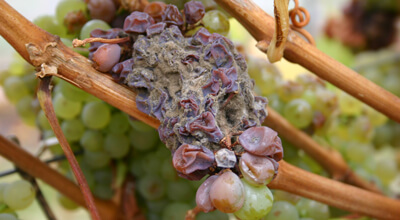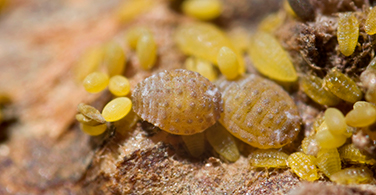Grape yield, berry and wine quality can be severely affected by vineyard pests and diseases and managing these in a changing climate can be challenging.
Through Wine Australia-funded research, many advances have been made in understanding the extent of, and developing management strategies for, pests and diseases in Australian vineyards.
This section provides resources and factsheets to assist in the management of pests and diseases, implementing best-practice spray programs and integrated pest-management strategies, which can contribute to improving resource management and sustainability for the Australian grape and wine community.
Current research projects addressing pest and disease management can be found under our Strategic Plan Strategy 4: Grow sustainable environments.
Further resources are available on the Australian Wine Research Institute website, which has a range of information on vineyard pests and disease as well as guidelines for Agrochemical use in the ‘dog book’.
Endemic disease concerns
Grapevine trunk diseases such as eutypa dieback and botryosphaeria dieback (bot canker) can cause significant yield reduction and threaten the sustainability of vineyards. Wine Australia-funded research has focused on management under Australian conditions with new knowledge included in a best practice management guide, factsheets and case studies in this section.
Powdery mildew, downy mildew and botrytis bunch rot are considered to be the top three disease concerns in Australian vineyards. The factsheets in this section provide information on the management of these and other diseases including phomopsis, and viral diseases such as grapevine fleck, grapevine leafroll, Australian grapevine yellows and rugose wood.
Exotic pests and diseases
Australia’s isolation and strict quarantine processes have protected the sector from many diseases and pests that have had a major impact in other wine producing countries around the world.
To continue to protect the competitiveness of the Australian grape and wine community, Wine Australia invests in preparing for possible exotic pest incursions through support for the development of diagnostic protocols for high priority pests identified in the Viticulture Industry Biosecurity Plan and the accompanying Biosecurity Manual for the Viticulture Industry. Current National Diagnostic Protocols for the Australian grape and wine community can be found on the Plant Health Australia website.


Phylloxera
Grape phylloxera (Daktulosphaira vitifoliae) is a tiny insect pest that destroys grapevines by feeding on their roots. Once vines are infested, they will die within a matter of years. There is no eradicative treatment, so infested vineyards must be replanted on phylloxera-resistant or tolerant rootstock, which is costly and takes a number of years for the vines to mature and produce a crop.
Phylloxera is present in a few Australian wine regions, but its spread has been slowed through biosecurity measures. The Yarra Valley first detected phylloxera in 2006 and has been managing the pest through replanting infected vines and biosecurity measures. Agriculture Victoria produced the below video exploring the impact of phylloxera with producers in the Yarra Valley and the financial and personal costs they have experienced.
Implementing best practice biosecurity measures at the vineyard and cellar door are the first defence against pests and diseases.
Vinehealth Australia provides pest and disease management policies, information on best practice biosecurity measures and advice on vineyard protection and phylloxera prevention, which can be found on their website.
They have a number of resources for farmgate biosecurity, including:
- vintage tool kit
- posters
- signs for consumer facing and non-consumer facing areas
- cellar door kits, and
- grower disinfestation kits.
Wine Australia-funded research has developed and evaluated new rootstocks with increased tolerance to pests including phylloxera. Wine Australia’s Grapevine Rootstock Selector helps growers to determine the rootstocks that will best suit their vineyard characteristics and variety selections as it brings together the most recent knowledge from Australian and international research about the specific characteristics of different rootstocks.


National Plant Biosecurity System
In March 2017, Australia’s seven plant Research and Development Corporations entered into a partnership to streamline funding efforts and plans to grow bio-security investment partners.
The partnership will see an increase in the research coordination, reduction in duplication and will fill gaps in plant biosecurity research and development. It will also create better linkages between industry research and the national biosecurity systems managed by the Australian and state and territory governments.
The group comprises Wine Australia, Forest Wood Products Australia, Cotton Research and Development Corporation, Grains Research and Development Corporation, Rural Industries Research and Development Corporation, Sugar Research Australia and Horticulture Innovation Australia.
Read the Research and Development Corporations’ position paper here.
